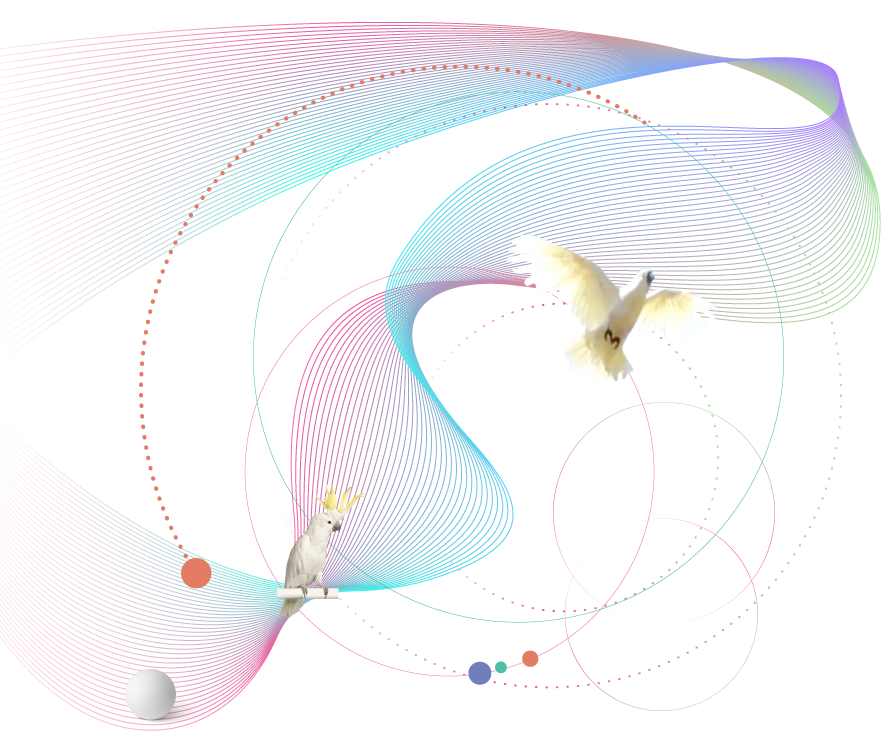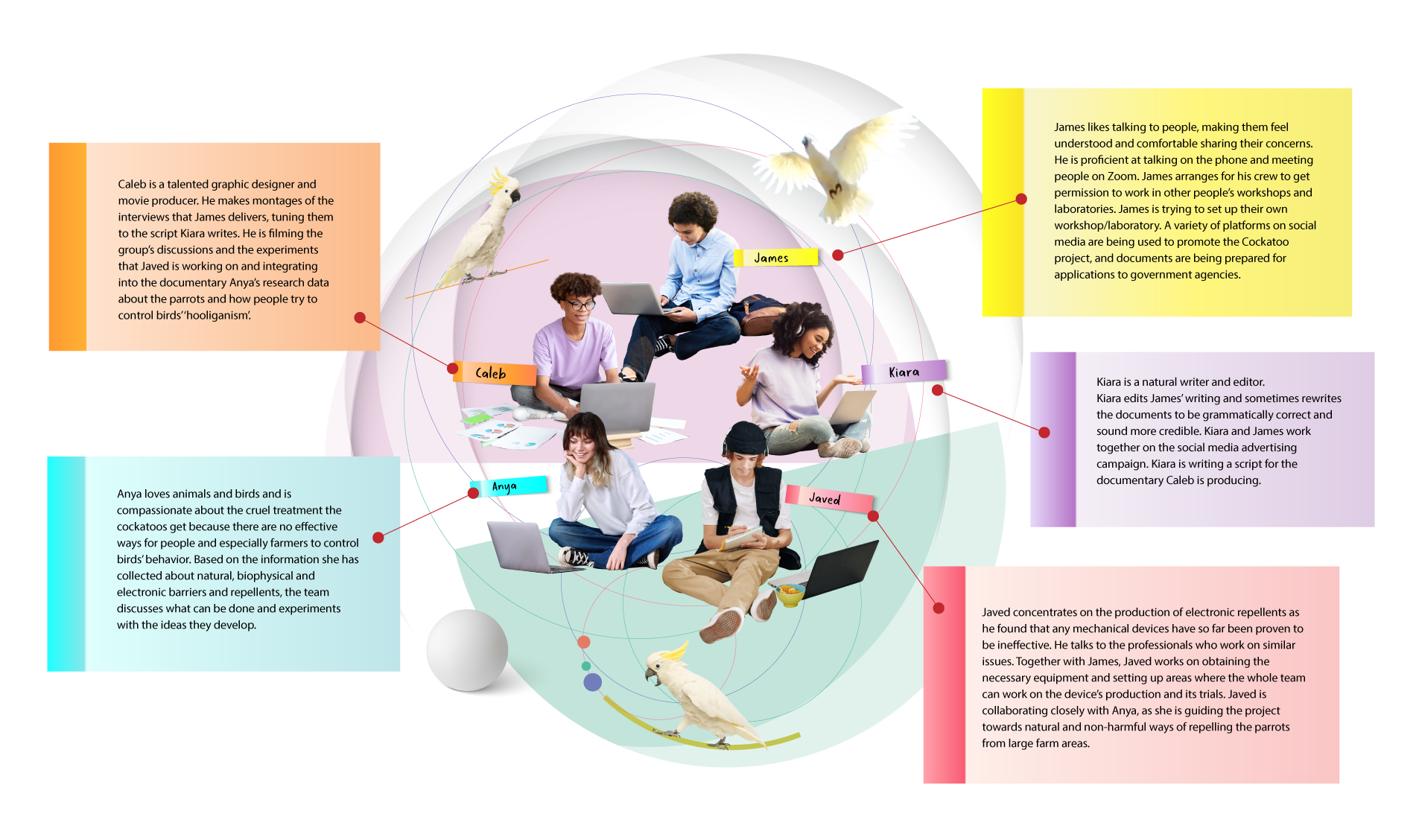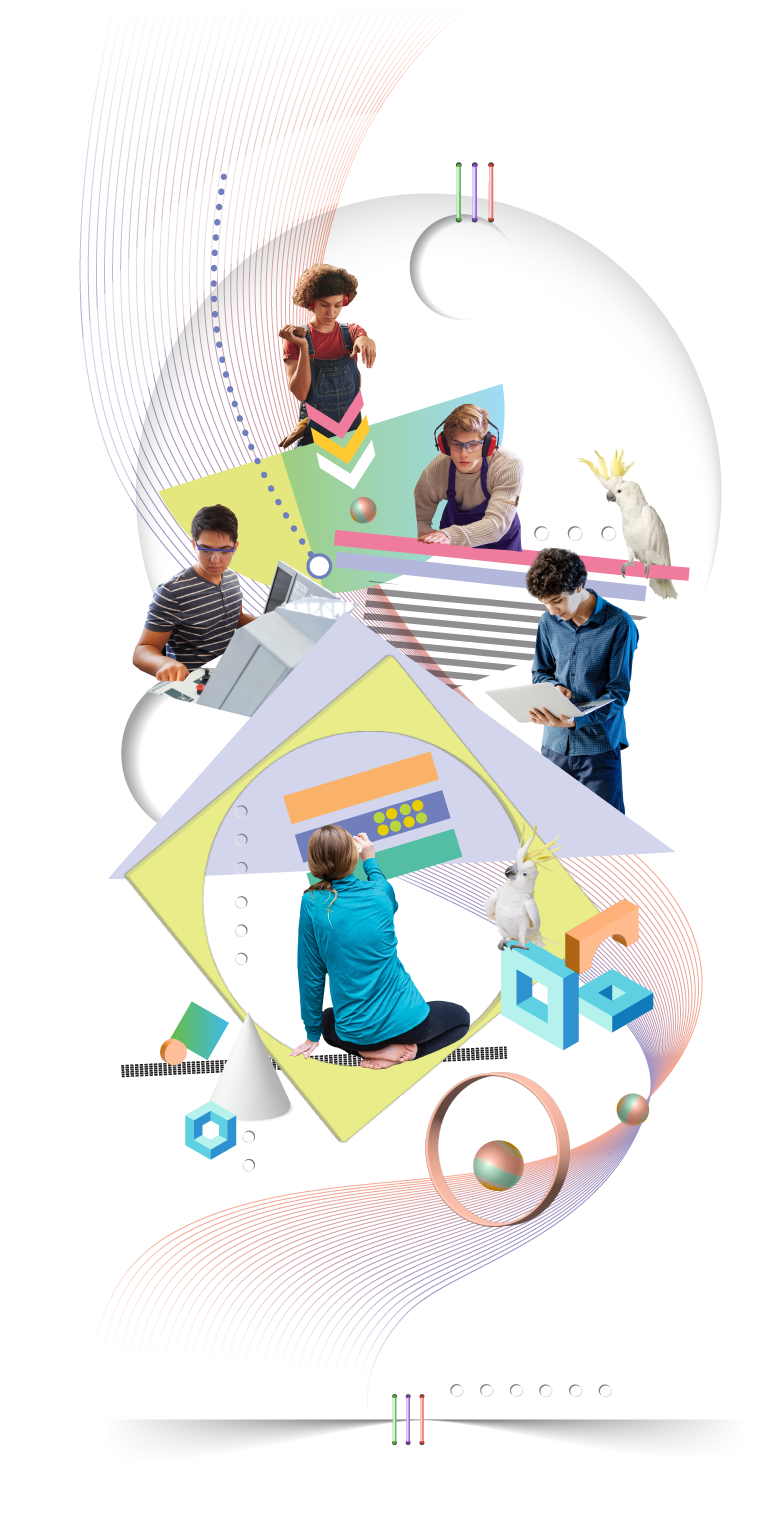Self/Others or Individual/Collective
Collaboration, like any other component in the R@W learning model, follows the dialectical principle of the learning ripple. It is composed of two opposite dimensions—Self ⌾ Others or the Individual ⌾ the Collective—and continuous feedback looping (∞) between the two.
On the one hand, the individual learner seeks an opportunity to tie his or her individual interest, curiosity, concerns, or fondness for specific tools or topics into a group project. On the other hand, the learner is aware that the other people in the group also have their individual preferences and seek out ways to act upon them.
From one angle, the individual learner tries to assert his or her differences. From the other, he or she strives to integrate their differences with the differences of others.
The goal then is to develop a repertoire of personal strategies to exercise individual agency while finding and maintaining the balance when working with the others members of the learning group. This ‘churning’ dynamic is realized through a continuous application of the feedback loops, resulting in the appreciation that whatever people do takes place in collaboration with others, as well as within the natural and technological aspects of their surroundings.
Teamwork
Five to seven learners in a learning group seems to be an appropriate number for the productive collaboration of people who have different interests and skills.
Teamwork is a contested topic in education. Theoretically, it is argued by authoritative figures like Jean Piaget, John Dewey, Lev Vygotsky and Jerome Bruner to be an excellent strategy for knowledge production.
And yet, in a real classroom, it is often a waste of time!
The students frequently discuss anything but the topic at hand, which leads to an uneven distribution of the task burden and unfair collective assessment.
However, if education is truly a system for preparing young people for real life in the real world, it has to provide learning conditions closely resembling real working settings. In real life, business is a team venture where people succeed by utilizing their own talents while drawing on other people’s expertise.
Again, as with the other 4Cs learning dimensions, the need for collaboration is recognized by formal education as essential. And that is why group learning is meant to be incorporated into the curriculum. But with the standardized approach, group learning is simply nonsensical. In the end, the grades of the learner are the results of a solo game.
Learn how R@W learning integrates collaboration.
Meet the R@W Learning Group

For instance, since he was little, James, a student from Australia, has kept hearing about and seeing people struggling to protect their timber-built houses from the damage caused by silver-crested cockatoos. He talked to some people in the area where he lives and found that the products available on the market to help people solve this problem have so far had very little effect.
James shared this problem with the group of friends who enrolled into the R@W School of Learning. After discussing the issue, they decided that they would try to find a solution to the problem. They saw real potential in working on it because the struggle was evident and the need for a solution was often quite urgent. If they solved this problem, they could look at similar problems concerning birds or animals damaging people’s properties. Thus, while still being school students, they could establish their own business.
After investigating the problem further, the students discovered that its implications were even more serious. In some agricultural areas, cockatoos cause real harm to crops. For want of a better solution, farmers control parrots by shooting, poisoning, or capturing and gassing them. Now they saw that the problem had not only economic but also environmental and moral aspects, and started planning their project with more enthusiasm.


